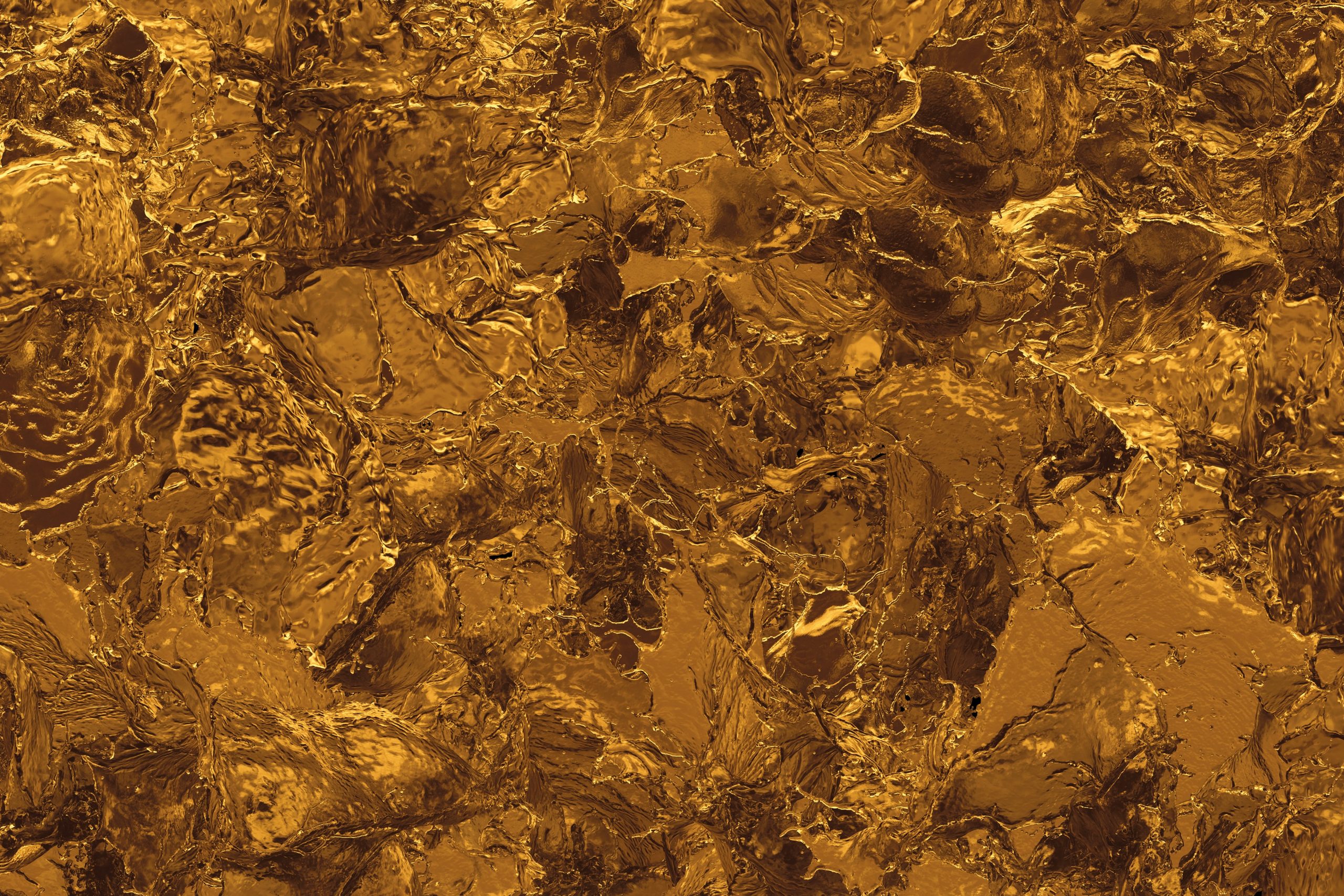Picture this: shimmering, radiant, and coveted. Gold has long been associated with wealth and power, but have you ever wondered how this precious metal climbed the ranks to become a symbol of prosperity? In this blog post, we’ll delve into the fascinating origins of gold and the journey it has taken to become the ultimate indicator of financial success. Whether you’re a seasoned investor or just curious about the allure of gold, you’re in the right place. So grab a cup of coffee and let’s uncover the captivating history behind gold’s rise to prominence.

This image is property of images.unsplash.com.
The Historical Significance of Gold
Gold has a rich and fascinating history that spans thousands of years and encompasses various civilizations across the globe. It has been a symbol of wealth, power, and beauty throughout history, with its allure captivating people across different cultures and time periods. Understanding the historical significance of gold can provide valuable insights into its enduring popularity and its role as an investment asset.
Ancient Civilizations and Gold
The allure of gold can be traced back to ancient civilizations such as the Egyptians, Greeks, and Romans. These civilizations recognized the beauty and rarity of gold and sought to acquire it for various purposes. In Egypt, gold was considered the flesh of the gods and was associated with the sun god Ra. It was used to create elaborate jewelry, funeral masks, and statues. The Greeks and Romans also valued gold for its aesthetic appeal and used it to adorn themselves and their surroundings.
Early Uses of Gold
Aside from its ornamental value, gold has been utilized for a wide range of practical applications throughout history. Dating back to around 4000 BC, gold was used for decorative purposes, particularly in jewelry. Its malleability and resistance to tarnish made it an ideal material for crafting intricate designs. Gold was also used in ancient dentistry, with evidence of its use in dental crowns and fillings found in Egyptian tombs.
Gold in Religion and Mythology
Gold has played a significant role in religious and mythological contexts. In various cultures, gold has been associated with divinity and has been offered as tribute to gods and deities. It has been used to create sacred objects, such as religious icons and ceremonial vessels. In Hinduism, gold is believed to be a symbol of purity and prosperity and is often used in religious rituals and ceremonies.
Gold as a Store of Value
One of the key reasons gold has remained a popular investment asset throughout history is its status as a store of value. Gold possesses intrinsic value due to its scarcity, durability, and aesthetic appeal, making it desirable across different cultures and time periods.
Intrinsic Value of Gold
Gold has inherent value due to its limited supply and the resources required for its extraction. Unlike fiat currencies that can be printed at will, the mining and production of gold are subject to physical constraints. This scarcity gives gold a sense of worth and helps protect against the erosion of value caused by inflation.
Gold as a Medium of Exchange
Gold has previously been used as a medium of exchange and a form of currency. It facilitated trade and commerce, providing a common and universally accepted unit of value. Throughout history, various civilizations have minted gold coins that were used for transactions. These gold coins were valued based on their weight and purity, providing a reliable means of exchange.
Gold as a Hedge Against Inflation
Gold has historically been considered a hedge against inflation, providing a safeguard against the erosion of purchasing power. In times of economic uncertainty, when the value of traditional currencies may decline, gold has proven to be a resilient asset. Its value tends to rise as investors seek to protect their wealth from inflationary pressures.

This image is property of images.unsplash.com.
Gold’s Role in Monetary Systems
The historical significance of gold extends to its role in monetary systems. For centuries, gold standards and gold-backed currencies were prevalent, providing stability and confidence in monetary transactions.
Gold Standards
A gold standard is a monetary system in which the value of a country’s currency is directly linked to a specific quantity of gold. Under a gold standard, the currency’s value is backed by gold reserves held by the central bank. This system was widely adopted in the 19th and early 20th centuries, providing a reliable foundation for international trade and financial stability.
Gold-Backed Currencies
Gold-backed currencies functioned by allowing individuals to exchange their paper currency for a specified amount of gold. This provided an additional layer of assurance and trust in the currency’s value, as it was directly redeemable for a tangible asset. The stability and convertibility of gold-backed currencies helped mitigate the risks associated with unstable fiat currencies.
Transition to Fiat Currencies
In the 20th century, most countries transitioned away from the gold standard and adopted fiat currencies. A fiat currency is not backed by a physical commodity like gold but relies on the trust and confidence of the public in its value. While the shift away from gold-backed currencies provided governments with more flexibility in managing their economies, it also introduced the potential for increased inflation and currency devaluation.
Gold Mining and Production
The process of gold mining and production has evolved significantly over time. From ancient methods to modern techniques, gold mining has played a crucial role in the extraction of this precious metal.
Early Methods of Gold Mining
In ancient civilizations, gold was often mined from rivers and streams by panning for alluvial deposits. Miners would use basic tools such as pans and sluice boxes to separate the gold from the surrounding sediment. In more complex operations, underground mining techniques, such as shaft mining and tunneling, were employed to access deeper gold deposits.
Modern Gold Mining Techniques
Modern gold mining techniques have become more sophisticated, utilizing advanced equipment and technology to extract gold from ore deposits. Open-pit mining has become the predominant method, with large-scale operations using heavy machinery to remove vast amounts of soil and rock to reach the gold-bearing ore. Chemical extraction processes, such as cyanide leaching, are employed to separate gold from the ore.
Global Gold Production
Gold is mined in various parts of the world, with significant deposits found in countries such as China, Australia, Russia, the United States, and South Africa. The global production of gold has steadily increased over the years, driven by the growing demand for this precious metal in various industries and as an investment asset.

This image is property of images.unsplash.com.
Gold’s Symbolism in Art and Culture
Gold’s allure extends beyond its value as a precious metal. It has played a prominent role in art and culture throughout history, captivating artists and inspiring awe and reverence.
Gold in Ancient Artifacts
Gold has been used in the creation of ancient artifacts, showcasing its cultural and symbolic significance. Elaborate gold jewelry, masks, and figurines have been discovered in archaeological excavations, representing the craftsmanship and artistic expression of ancient civilizations. These artifacts provide a glimpse into the cultural values and beliefs of the past.
Depictions of Gold in Paintings
Gold has frequently been depicted in paintings throughout the centuries. From Renaissance masterpieces to modern artworks, gold leaf and gold paint have been utilized to add depth, luminosity, and richness to a composition. The use of gold in paintings often signifies wealth, power, and divinity, enhancing the overall aesthetic appeal of the artwork.
Gold in Literature and Music
Gold has been a recurring theme in literature and music, symbolizing various concepts and emotions. In literature, gold is often associated with wealth and opulence, representing the pursuit of material possessions. In music, gold is used metaphorically to convey emotional depth and significance. Its inclusion in lyrics and album artwork enhances the artistic expression and resonates with listeners.
Gold’s Industrial Applications
Beyond its monetary and symbolic value, gold possesses unique properties that make it highly valuable in various industrial applications.
Electronics and Technology
Gold is an excellent conductor of electricity and is highly resistant to corrosion, making it an essential component in electronic devices. It is used in circuit boards, connectors, and switches, enabling the efficient transmission of electrical signals. The demand for gold in the electronics industry has been steadily increasing due to the rapid advancement of technology.
Dentistry and Medicine
Gold has long been used in dentistry for its biocompatibility and durability. It is commonly used in crowns, fillings, and other dental restorations. Additionally, gold nanoparticles are being explored for their potential medical applications, including drug delivery and diagnostics.
Gold in Space Exploration
Gold’s unique properties have also made it valuable in space exploration. Gold-coated panels are used on spacecraft to reflect and dissipate heat, protecting sensitive instruments from extreme temperature fluctuations. Gold is also employed in electronic components of satellites and spacecraft due to its reliability under harsh conditions.
The Role of Gold in Jewelry
Gold jewelry has been a symbol of wealth and status for centuries. Its historical significance in the realm of adornment is deeply rooted in cultures worldwide.
Historical Significance of Gold Jewelry
Gold jewelry has been prized and cherished since ancient times. It has often been associated with royalty, wealth, and luxury. Across different civilizations, gold has been used to create intricate necklaces, bracelets, earrings, and rings, symbolizing power and social standing.
Contemporary Gold Jewelry Markets
The demand for gold jewelry remains strong in the modern world. From traditional designs to innovative and contemporary styles, gold jewelry continues to be a popular choice for personal adornment and as a means of investment. Global markets offer a wide range of designs and options, catering to diverse tastes and preferences.
Gold’s Value in Jewelry
Gold jewelry holds both aesthetic and intrinsic value. Its durability and resistance to tarnish make it an excellent long-term investment. The value of gold in jewelry is determined by its purity, weight, craftsmanship, and cultural significance. Gold jewelry can serve as a treasured heirloom and a tangible store of wealth.
Gold Investments and Financial Markets
Investing in gold has long been considered a prudent strategy for diversifying and preserving wealth. There are various ways in which individuals can invest in gold, each offering its own advantages and considerations.
Physical Gold vs. Gold Stocks
Investing in physical gold entails purchasing gold bullion bars, coins, or jewelry. Physical gold offers the advantage of direct ownership and tangible possession of the precious metal. Conversely, investing in gold stocks involves buying shares in gold mining companies or exchange-traded funds (ETFs) that track the performance of gold. Gold stocks provide exposure to the gold industry without the need for physical ownership.
Gold Exchange-Traded Funds (ETFs)
Gold ETFs are investment vehicles that trade on stock exchanges and aim to track the price of gold. These funds invest in physical gold and offer individual investors the opportunity to gain exposure to the gold market. Gold ETFs provide liquidity, ease of trading, and the ability to buy and sell gold without the need for physical storage.
Gold Futures and Options
For more experienced investors, gold futures and options can provide opportunities for speculative trading and hedging strategies. Gold futures contracts allow investors to buy or sell gold at a predetermined price and date in the future. Options, on the other hand, provide the right to buy or sell gold but without the obligation. These financial instruments require a strong understanding of market dynamics and carry higher levels of risk.
Global Geopolitics and Gold
Gold’s historical significance is closely intertwined with geopolitics, with governments and central banks actively participating in the gold market.
Central Banks and Gold Reserves
Central banks hold significant amounts of gold as part of their foreign exchange reserves. Gold reserves provide stability and confidence in a country’s currency, acting as a hedge against potential economic disruptions. The decisions made by central banks regarding their gold holdings can influence global gold markets and investor sentiment.
Gold in International Trade and Reserve Currencies
Gold has been used throughout history as a means of international trade and settlement. The value and scarcity of gold provide assurance in cross-border transactions and help maintain the stability of reserve currencies. Gold’s role in international trade continues to be significant, as it acts as a neutral and universally accepted form of payment.
Gold’s Role in Economic Crises
During times of economic crises, gold has often served as a safe haven asset. Its value tends to rise when confidence in traditional financial markets declines. Investors often flock to gold as a means of protecting their wealth and diversifying their portfolios. The historical track record of gold as a store of value during turbulent times has contributed to its enduring appeal.
The Future of Gold
Looking ahead, the future of gold appears promising, with several factors shaping its potential growth and continued relevance.
Gold Price Forecasts
There are numerous factors that can influence the future price of gold, including global economic trends, geopolitical uncertainties, and investor sentiment. While it is challenging to predict the precise future price of gold, many analysts and experts believe that gold’s role as a safe haven asset and store of value will remain intact.
Technological Advances and Gold
Technological advancements can impact the demand for gold in various industries. The increasing prevalence of electronics and electric vehicles, for example, may drive the need for gold in electronic components and batteries. Furthermore, advancements in mining and extraction technologies may enhance the efficiency and cost-effectiveness of gold production.
Gold’s Resilience as an Investment
Gold’s historical performance as an investment asset underscores its resilience and ability to withstand economic uncertainties. Its long-standing reputation as a store of value and safe haven asset positions it as a potential hedge against inflation and market volatility. As financial markets continue to evolve, gold’s role as a stable and tangible asset may continue to attract investors looking for diversification and wealth preservation.
In conclusion, the historical significance of gold is deeply rooted in ancient civilizations, religion, and art. It has served as a store of value, a medium of exchange, and a symbol of wealth and power. From its role in monetary systems to its industrial applications and investment potential, gold has proven to be a versatile and enduring asset. As we look to the future, gold’s timeless allure and intrinsic value suggest that it will continue to play a vital role in our global economy and investment landscape.



